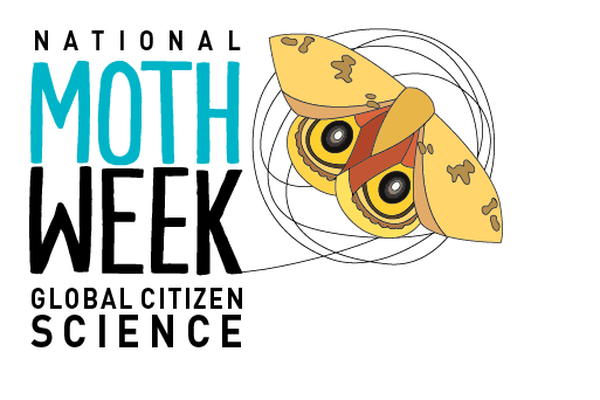National Moth Week
from 18/07/2020 until 26/07/2020
As people likely will continue avoiding crowds this summer to slow the spread of COVID-19 infections, National Moth Week (NMW) offers the opportunity to learn about nighttime nature from the safety of backyards and gardens; porches, decks and balconies – anywhere a light can be turned on. Free registration of private and public moth-watching events is encouraged on the NMW website in order to show where moths are being observed around the world. All participants will receive a beautiful certificate of participation designed by Ecuadorean artist Belen Mena of the NMW team. In addition to using lights, moth-ers also can attract moths by coating tree trunks with a sticky, sweet mixture of fruit and stale beer. Searching for caterpillars and day-flying moths is a good activity for daytime. The NMW website offers tips on attracting moths. Participants are invited to contribute photos and data to NMW partner websites, as well as the NMW Flickr group, which now has over 100,000 moth photos from around the world. Moth observations submitted to iNaturalist.org, a site for sharing observations in the natural world, will be added to the NMW project on that site. Last year, over 27,000 moth observations were posted on iNaturalist.
Aim
National Moth Week is a global project that focus on moth biodiversity and distribution. Everyone, everywhere can observe moths just by turning on an outdoor light near a landing surface (such as a wall or a hanging white sheet). Participants are encouraged to submit observation to of our global or local data depository partners. In addition to documenting moths in the global changing environment the project also encourage people of all ages to discover night time (and day time) nature.
Needed equipment
Any type of light will attract moths. Just leave a porch light on and wait and see what is attracted to it. If you are in a field or forest, you can use battery-operated lights or even a flashlight. Entomologists use black lights and mercury vapor lights, which emit light in a color spectrum that moths find irresistible. These types of lights can be ordered online at relatively low cost. Moths need a surface to rest on. White sheets are often used. Hang a sheet over clothes line or between two trees, and shine the light on it. An outside wall also works well if your light is set up near a house or a building. Wait for the moths to come to your light so you can observe and photograph them.
Created June 22, 2021, 2:08 p.m.
Updated June 22, 2021, 2:08 p.m.
